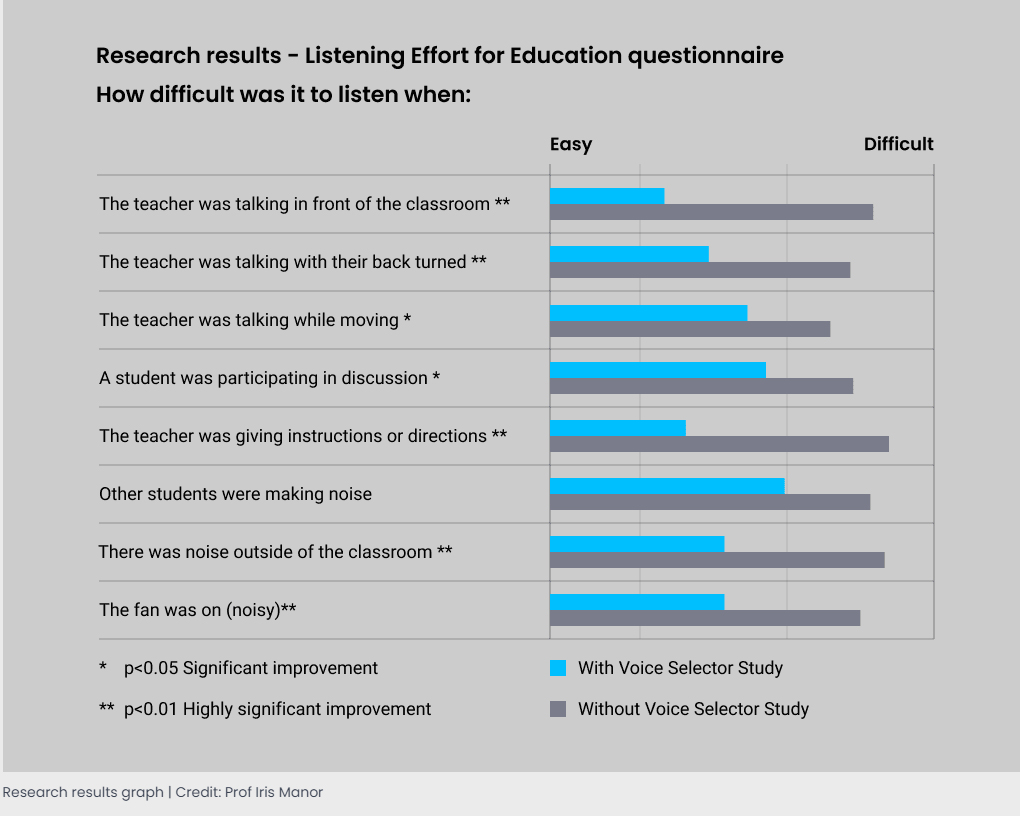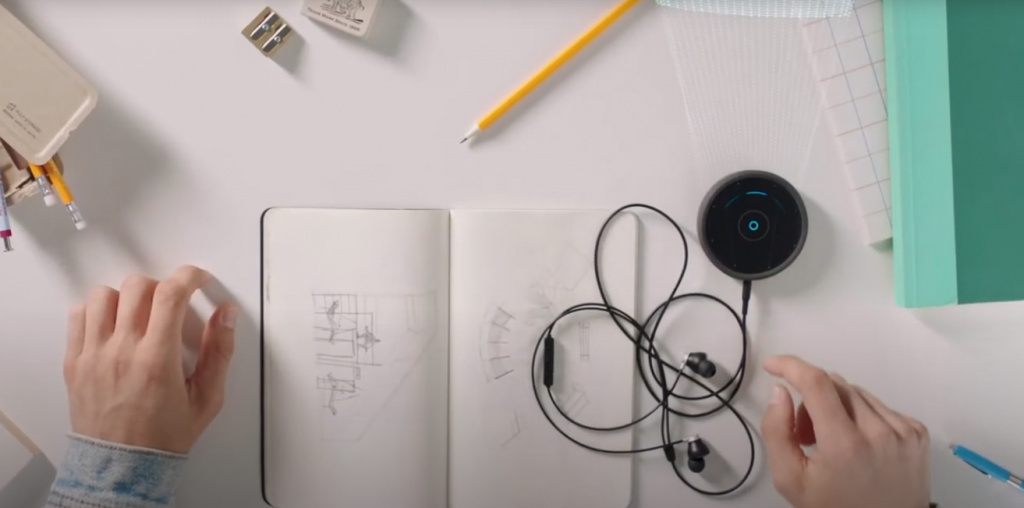
There are so many reasons why children can’t concentrate in lessons – probably as many reasons as there are children in the class. A teacher who keeps moving around or who stands at the back of the classroom at different points in the lesson can be a distraction. Then there are the ‘quiet noises’ such as children scuffling or whispering and the rustling of paper. When we are stressed, what is inside our heads takes precedence over external stimuli, so a child who is anxious or who has had a quarrel at home or been bullied on the way to school is unlikely to devote all their attention to the lesson at hand.
Sometimes, the distraction is caused by sensory issues. Some children are revolted by the smell of food as it is cooking and find the sessions leading up to lunchtime particularly difficult. Carpet activities need planning so that children who are sensitive to noise or movement behind them are sitting with their backs to the wall. Teachers try to manage their classes so there are as few distractions as possible, but many modern buildings do not have good acoustics.
Acoustics matter
The National Deaf Children’s Society has campaigned for good listening conditions for pupils in all schools with research showing improvement in behaviour and academic achievement for pupils across the boards – not just for those with hearing loss. Back in 2009, Essex County Council worked with the National Deaf Children’s Society and the Federation of Property Societies to improve the acoustics in three classrooms at Sweyne Park School, a secondary school with a large resource base for deaf students. The Essex Study can be read here, but there were some highlights:
- The overall impression from the data was of an overwhelming improvement in working conditions for both staff and pupils.
- Staff commonly used the terms ‘Quieter ‘ and ‘Calmer ‘ to describe the changes.
- Teachers involved in the interviews varied in seniority and length of experience, but even the most experienced of teachers found the changes a big improvement.
- Less experienced staff reported a large reduction in stress levels.
One teacher found that improvement in the pupils’ behaviour followed changes in the acoustic environment. When using a treated room with groups that were not normally taught in a treated room, their behaviour also improved. He felt that improving the acoustic environment allowed him to ‘teach with less stress and more effectively’. Another experienced teacher reflected that he was able to do group work in the treated room, whereas before he would not take that risk.
Right now, refurbishing and retrofitting classrooms is likely to be on the back burner as schools and local authorities grapple with the problems of RAAC, but there are other ways of helping those children who struggle with noise or who are easily distracted, or even overwhelmed, by noisy classrooms.
A breakthrough technology
At the TES SEND Show in Islington in October, there was considerable interest in Nuance Hearing’s Voice Selector Study, a learning aid which helps students tune out background noise and focus on lessons. It is a clever device that sits on the desk. The user plugs in headphones and eight tiny built-in microphones. An algorithm then detects the direction of sounds and creates a 15db volume difference between the chosen source and the background noise. It’s as if it turns up the teacher’s voice and turns down the distractions. Nuance describes it as a ‘breakthrough technology’.
‘Noise and attention issues have a damaging effect on communication for millions of people, and we’re determined to help,’ the company said. ‘Thanks to our truly breakthrough technology, we are able to make a real impact, improving the quality of life for a diverse group of people.’ See it in action at https://nuancehear.com/voice-selector-study/.
The pilot study in Israel
In 2020, a study was undertaken by Clalit Health Services. Israel’s largest state-mandated health service organisation. They conducted research on the effectiveness of Voice Selector Study to improve the focus of adolescents struggling with Attention Deficit Hyperactive Disorder (ADHD) in the classroom.
Led by Professor Iris Manor, chair of the Medical Association’s Attention Deficit Disorder Society and senior lecturer at the Sackler School of Medicine at Tel Aviv University, the research looked at the experiences of 31 teenagers aged 14-18. The participants completed questionnaires to rate their typical learning experience. Next, they were asked to use Voice Selector Study at their school for five consecutive days. At the end of each day, the participants filled out questionnaires and rated their learning experience with the device.

The results of the study indicated a significant improvement in lesson performance when students used Voice Selector Study. It helped learners to focus attention on what is happening in lessons, pay less attention to vocal distractions and background noises from both inside and outside the classroom, and concentrate on the teacher’s explanations and instructions. There was also a marked improvement in behaviour suggesting a link between the students’ ability to pay attention and their observable behaviour in class. The full report can be found here: https://nuancehear.com/wp-content/uploads/2022/01/Voice-Selector-Study-Iris-Manor-white-paper-26July21-2.pdf.
Is noise a real issue in the classroom?
According to Nuance Hearing’s chief audiologist, Tami Harel, consciously separating out useful speech from other distracting sounds increases the cognitive load, so learners do not have sufficient brain power to process the new content. This affects learners’ memory and learning capacity. It impacts children more than adults.
‘Noise-induced disruption also affects non-auditory tasks, such as the recall of visual information, or the act of reading,’ Tami said. ‘One study found that an ‘irrelevant sound effect’ (such as single-talker speech or non-speech sounds caused by tones or instrumental music) reduced second-graders’ performance by 39% relative to quiet, compared with just an 11% drop in adults.’
The Framework for Understanding Effortful Listening (FUEL) in 2016 showed that listening and processing information is only partly about hearing and knowledge of the language but is also affected by the individual’s motivation and their willingness to engage:
‘They often report that sounds are loud enough and speech can be understood, but it is tiring and often just too hard to listen. Despite the frequently reported experience that listening is effortful, tiring, or stressful, even when sounds are audible and words are recognised accurately, clinical measures of listening effort have not been readily available. In the larger picture, how can audiologists better understand and find ways to counteract the factors underlying why listeners may decide to quit participating in activities because it takes too much effort to listen?’
See the full report here: https://journals.lww.com/ear-hearing/fulltext/2016/07001/hearing_impairment_and_cognitive_energy__the.2.aspx.
Voice Selector Study in UK schools
This kind of research has driven increased awareness within schools alongside the rise of assistive devices which can help to mitigate the effects of unwanted noise. Several primary schools in the UK have been trialling the device and have received positive comments.
One primary academy near Manchester said: ‘We have had the Nuance Hearing devices on trial at our school for a few months. There has been a vast improvement in class participation from the children who have been using the devices. Children from age 6 to age 11 have trialled the device and found it works in and around the classrooms for various different reasons. The pupils using the device are a lot more focused in lessons and concentration is overall much better. Pupils are able to stay on task for longer periods of time.’
The children’s comments were positive too: ‘The device helps me listen and hear the teacher. I can hear my teacher very clearly and it helps me with my writing.‘ ‘The device is very useful to use and it helps me to listen and concentrate when the teacher is moving.‘ ‘It helps me not zone out in class. ‘
One detailed case study came from a parent’s perspective and showed how the increasing workload in secondary school can throw up problems which go unnoticed in primary school. In other words, it is about changes in the environment rather than changes in the child. The parent said:
‘From the age of around 2, I suspected that my son might have issues with his development. He ran lopsided and was obsessed with spinning things like washing machines. He craved routines – if we went out of the house, he had to know everything about where we were going, how and when. Once he reached school age, although he struggled socially, he was quiet and well-mannered, could read well and write and pass tests, so any worries we had about his learning got brushed under the carpet. We lived in a small village and he went to a small and nurturing school.

‘That all changed when he went to secondary school. We moved house and he went to a much larger school, and things became really difficult for him. He found the classroom noise torturous and he struggled to concentrate. He was mercilessly bullied. He developed a stutter. He became quiet and withdrawn. I knew I had to help him, so I finally had him formally assessed by a child psychologist. I had suspected ADHD, but he came back with a diagnosis of autism. As soon as he had his EHCP, that meant he had academic support and the school were much more behind him and able to address his needs. The bullying stopped.
‘One of the many issues associated with his autism is that he has an incredibly acute sense of hearing. He can hear static electricity and the hum of security systems. He can tell when a Sky box is on, so classroom noise is like torture. I bought him some Air Pod Max with noise cancellation, but he wouldn’t wear them. Then my mum told me she’d read about a classroom device on the internet from a company called Nuance Hearing, so I decided to get in contact with them.
‘The Voice Selector Study did take a bit of getting used to, and because he is so sensory, he was reluctant to wear the headphones, but once he got used to it, it’s made a huge difference for him in school. Now he hears what’s going on in a lesson, rather than just guesswork from the notes on the whiteboard. It’s made him far more independent and in charge of his own learning. He can put his headphones on, listen to the teacher and get on with his work. What’s more, his grades have improved significantly this term, probably because he’s able to focus and concentrate a whole lot more.’
For more information about Voice Selector Study see https://nuancehear.com/voice-selector-study/.
Sal McKeown is Commissioning Editor for Digital Learning magazine.
Register for free
No Credit Card required
- Register for free
- Free TeachingTimes Report every month